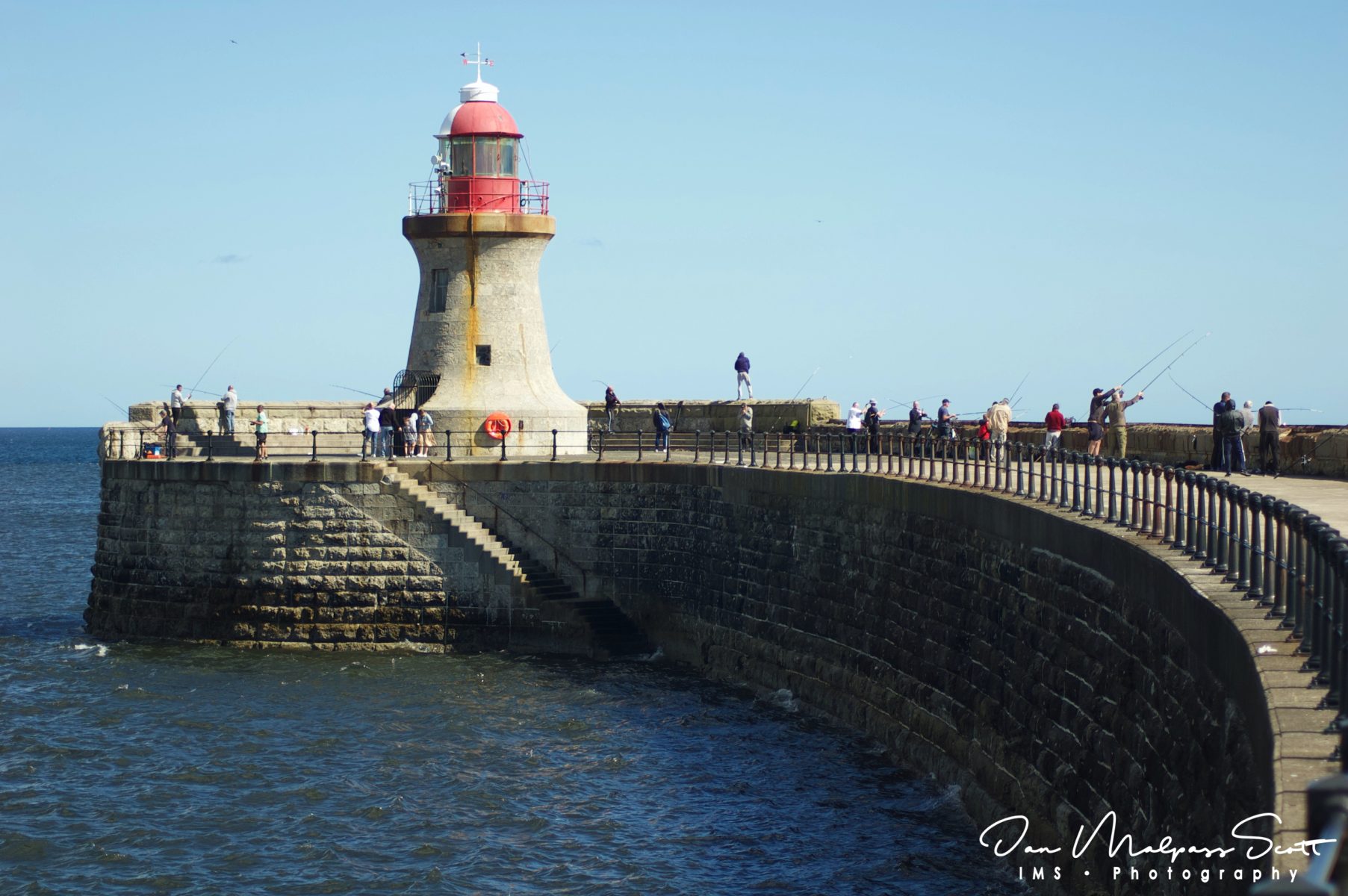South Shields pier & lighthouse.
Work on the North and South Tyne Piers was begun in 1854 by the newly formed Tyne Improvement Commission, for the protection of shipping entering and leaving the river. The principal architect and engineer was James Walker, until his death in 1862 (whereupon John F. Ure took over). Construction was delayed by storm damage in 1862, which led to parts of the foundations having to be rebuilt. The South Pier was finished in 1895 and its lighthouse was operational that same year (it was equipped with a third-order fixed optic and a clockwork occulting mechanism, by Chance Brothers & Co.) The lighthouse currently displays an occulting sector light with white, red and green sectors; the green sector is used to indicate safe waters near the coast to the north of Tynemouth, while red indicates an area with numerous wrecks to the east and south of the lighthouse. The pier is 5,150 ft (1,570 m) long (accessible from South Shields seafront, it is open to the public except in bad weather).
It was originally intended that the North (Tynemouth) Pier and lighthouse would mirror their South Shields counterparts, but a series of breaches and collapses meant that the North Pier was completed much later and to a different design. Following completion of the North Pier, in January 1908 the South Pier Lighthouse was provided with a bell, which sounded once every thirty seconds during foggy weather (in contrast to the reed fog horn sounded from the North Pier light).
There is a third lighthouse, just upstream of the pier, on the Herd Groyne at South Shields (which was constructed in 1861–67 to preserve Littlehaven Beach, then known as Herd Sands, which had begun to be washed away by the change of currents caused by the new piers). This very unusual lighthouse resembling a 1940s sci-fi movie space craft was built by Newcastle-upon-Tyne Trinity House in 1882 (ownership was passed to the Tyne Improvement Commission the following year). It consists of an upper hexagonal part (including the lantern) of wood and corrugated iron construction, sitting on twelve cylindrical steel legs. The whole structure is painted red and stands 49 ft (15 m) in height. The Groyne shows an occulting light which marks a safe entrance course between the piers, showing white to a vessel approaching from seaward on the correct course, green to a vessel off-course to the north, and red to one off-course to the south.
In 1928 both the South Pier and the Groyne lights were converted from incandescent gas to automatic electric operation. They were run off mains electricity (the gas lights being retained as an emergency standby). At the same time each lighthouse was equipped with an electrically activated fog bell; these were switched on and off remotely from a control hut in the pier blockyard. In the event of a power cut, each bell was designed to keep ringing for a further six hours. In 1961 the Commissioners installed a groundbreaking system by which the two fog bells would be switched on and off by the keepers on duty in the Tynemouth Pier lighthouse, using an ‘infra-red ray’ beamed across the river. This was in turn replaced by a radio link to an automatic fog detector when the latter lighthouse was automated in 1967. At the same time the South Shields lights were themselves fully automated, with the addition of standby diesel alternators and automatic lamp changers.
In 1999 the white sector of the light was intensified by the addition of a PEL sector light above the optic, with the same occulting characteristic but a range of 19 nautical miles (rather than 13, as previously). The installation of this powerful light (which is visible during the day as well as by night), rendered the High and Low Lights of North Shields redundant, and they were therefore decommissioned at the same time. The Herd Groyne lighthouse was refurbished and repainted in 2014, and still acts as a navigational aid to ships entering the River Tyne. In 2015 it was stated that the fog bells on the two lighthouses were no longer operational.


